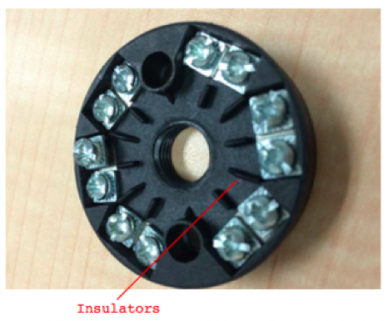
Thermocouples are popular temperature measurement devices due to their versatility, responsiveness, ruggedness, and low cost. To make the most of them, here are five things you should know about industrial thermocouple assemblies.
Thermocouples are the workhorses of the temperature measurement world. They are reliable, versatile, long lasting, inexpensive, and respond quickly to temperature changes.
Thermocouples come in a variety of calibration types, determined by the two metals used for the positive and negative conductor wires. The two conductors are connected at one end; this is the measuring junction (hot junction). At the other end, the conductors do not touch; this is the reference junction (cold junction). The difference in the electromotive force (emf) generated at the two junctions can be calibrated to give a fairly accurate temperature reading.
As with any temperature measurement device, the main criteria when choosing which industrial thermocouple to use are 1) the operating temperature range and 2) the environment or media in which these instruments will be used. However, there are other considerations to keep in mind when measuring temperature with a thermocouple assembly.
1. Reference value
Because a thermocouple measures temperature using the difference in emf at the two junctions, it gives a relative measurement, not an absolute measurement. The temperature of the cold junction must be known to obtain the actual temperature at the hot junction. Modern industrial thermocouples make this compensation easy by having a separate sensor built into the temperature transmitterto measure the ambient temperature at the reference junction.
2. Connection
When connecting the thermocouple sensor, the positive wire and the negative wire should not be switched. If they are, the polarity is reversed and the reading will be incorrect or even negative. Switched wiring is one of the common causes for thermocouple temperature measurement errors. Be sure to follow the thermocouple’s specifications when connecting the wires.
Note: In many electrical systems, the color red is used to designate positive polarity. The opposite is true for thermocouples in the United States, where the red wire is the negative wire.
3. Galvanic isolation
The temperature sensor is mounted and grounded in the field, while the measuring instrument is often located and grounded in a separate control room – sometimes quite far from the sensor. The ground potential in the field can be different from the ground potential in the control room, causing currents and sparks that can damage the instrument. Having a temperature transmitter with galvanic isolation and isolated output will avoid this problem.

The Crastin® block has the same temperature rating as the junction box or field connection wires. The screws have special slots, which will spread stranded wires and clamp tightly. It can secure wire sizes from 16AWG down to 36AWG. Another nice feature is the channels, which separate the wires and prevent them from shorting out against each other.
4. Sensor break monitoring
Thermocouple assemblies are designed to sound an alarm when the circuit opens. However, connections can come loose in the ceramic terminal block under vibrating conditions, triggering the alarm even though the circuit itself is fine. Ceramic terminal blocks are also prone to breakage. A Crastin® terminal block, with special slots for the wires and a clamp that keeps connections securely in place, prevents false alarms. That is why most WIKA thermocouple assemblies can be manufactured with a Crastin® terminal block.
5. Linearity
The voltage–temperature curve of a thermocouple is not linear. Low-quality transmitters take the upper and lower limits and draw a straight line. This simplification can create errors in the reading, depending on which part of the curve you are using. High-quality temperature transmitters, such as all the ones from WIKA, linearize the voltage along the curve.
With their extensive laboratory and field experience, WIKA’s experts have a thorough understanding of industrial thermocouple systems. Contact them today for more information on which temperature measurement solution is right for your application.

